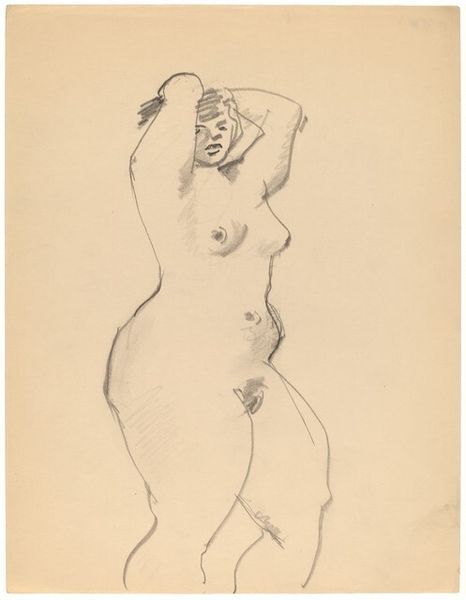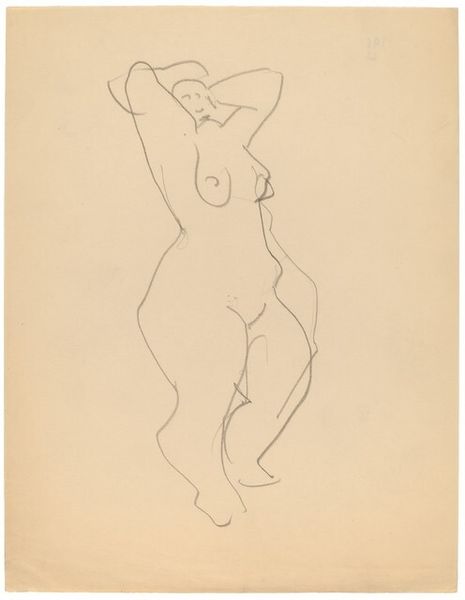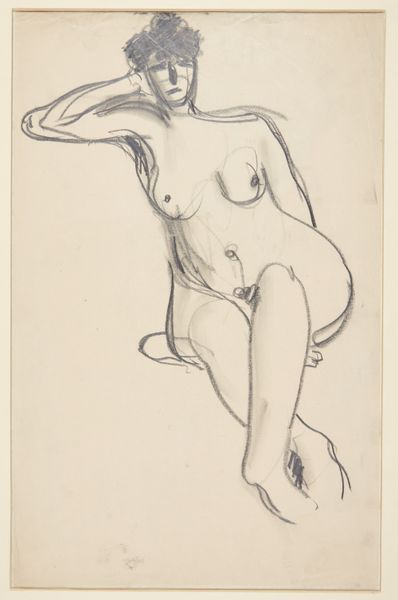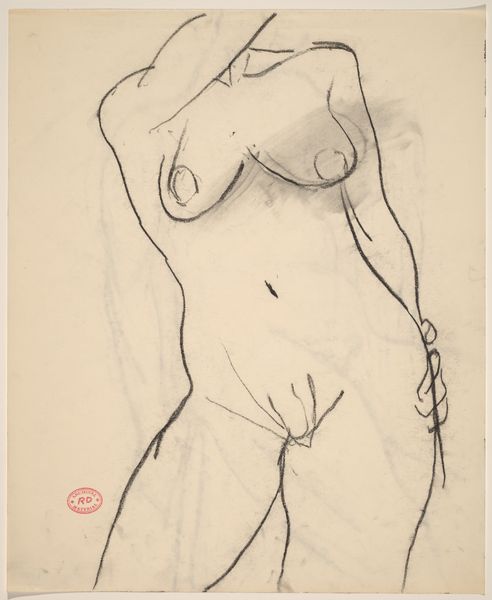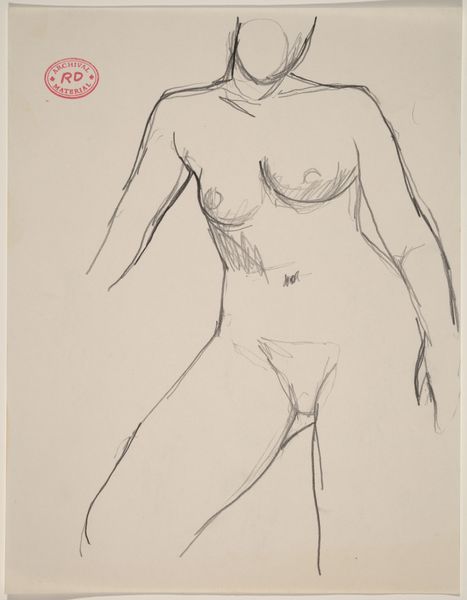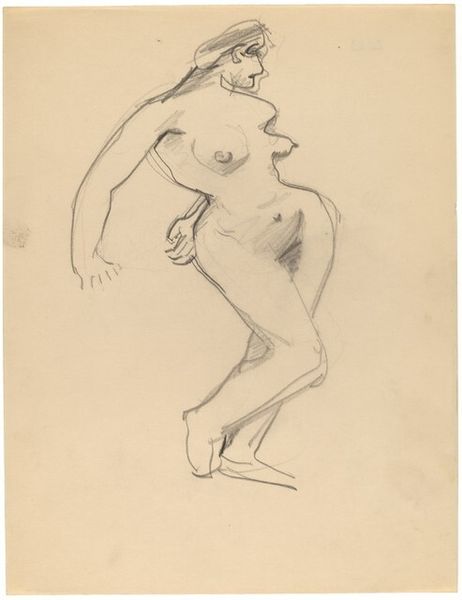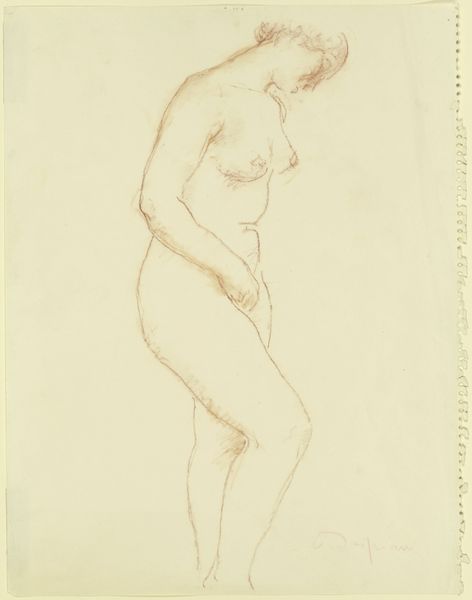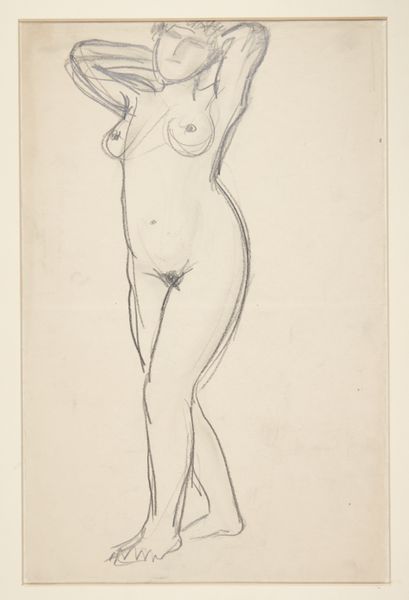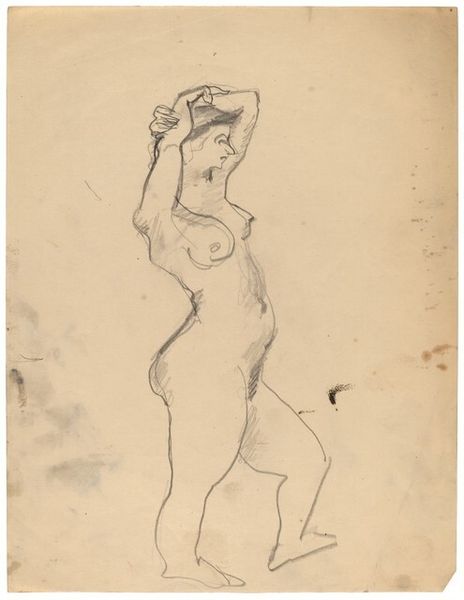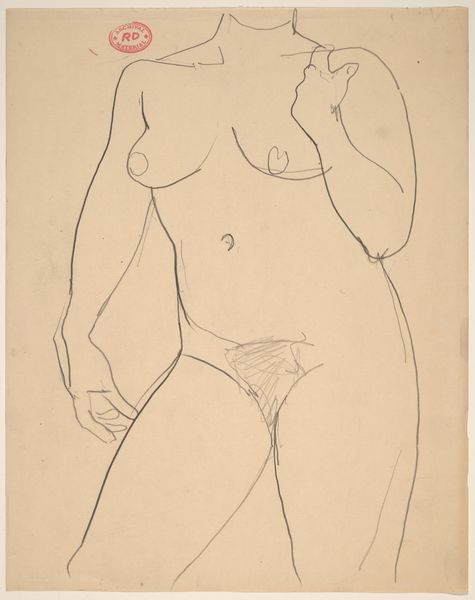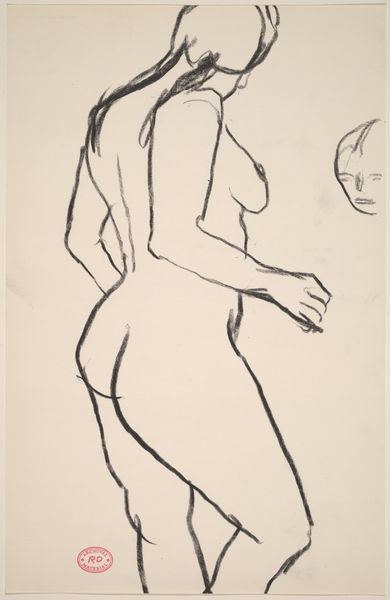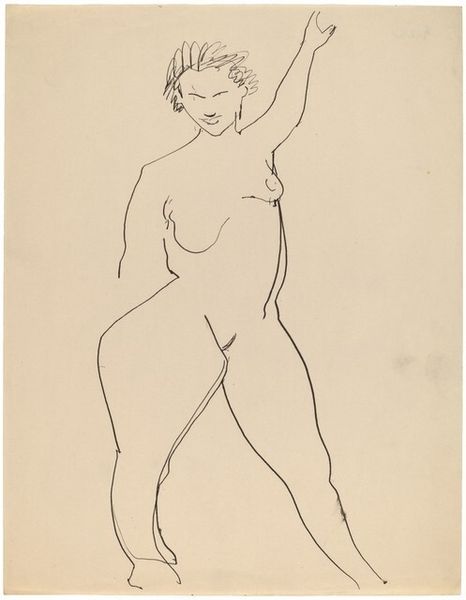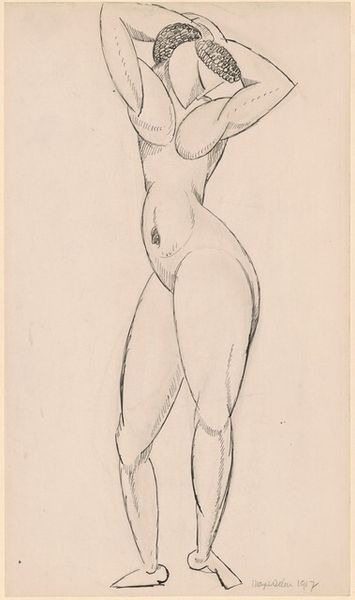
Standing Female Nude Turned to the Left, Arms Raised, Head Lowered
0:00
0:00
drawing, pencil
#
portrait
#
drawing
#
figuration
#
pencil
#
nude
Dimensions: overall: 27.9 x 21.6 cm (11 x 8 1/2 in.)
Copyright: National Gallery of Art: CC0 1.0
Editor: So, here we have a pencil drawing titled "Standing Female Nude Turned to the Left, Arms Raised, Head Lowered" by Mark Rothko. There's something about the rawness of the lines and the pose that makes me wonder... What am I really seeing here? How would you interpret this work? Curator: It's tempting to look at this drawing purely through a modernist lens – to discuss the simplification of form, the expressiveness of line. However, to fully appreciate this work, we need to consider the socio-political context. Early 20th-century nudes, particularly those created during wartime, often grappled with anxieties around the body, gender, and representation. Do you notice anything about her posture? Editor: She looks almost…defeated? The lowered head and raised arms have this feeling of vulnerability and perhaps resistance? Curator: Precisely. Think about how women were portrayed in art and society at that time. This isn’t a passive odalisque. Rothko is playing with conventions, perhaps even challenging them. It makes us ask: whose gaze are we viewing this through? And what is Rothko suggesting about the female body and its place in a rapidly changing world? Editor: So it's not just about the figure itself, but also about how Rothko positions her within societal expectations? Curator: Exactly. And consider the power dynamics at play when a male artist depicts the female nude, and how this artwork might be challenging those very assumptions that often controlled images of women and the reception by viewers. Editor: I never thought of it that way, focusing on the tension and societal context around its depiction. That gives me a lot to think about! Curator: Indeed. Artworks often reflect and shape the very cultures that produce them. That’s why considering the history and its social dynamics is crucial.
Comments
No comments
Be the first to comment and join the conversation on the ultimate creative platform.
